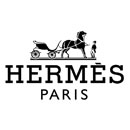
Hermes Paris
Paris, FranceFounding:
1837: Thierry Hermès establishes the company in Paris, focusing on crafting harnesses and saddles for horse-drawn carriages.
Milestones:
Late 1800s: Hermès starts catering to European noblemen and expands into accessories, such as bags and leather goods.
1920s: Introduction of the iconic Hermès silk scarves.
1930s: The Hermès family introduces handbags and begins offering a broader range of products.
1978: Launch of the first women's ready-to-wear collection.
Evolution:
Hermès evolved from a specialist in equestrian goods to a diversified luxury brand, spanning leather goods, fashion accessories, perfumery, and ready-to-wear fashion.Cultural Context:
The brand's roots in equestrianism influenced its craftsmanship and dedication to quality. It initially appealed to the aristocracy and later gained popularity among the elite and affluent.Positioning & Brand Values:
Known for exquisite craftsmanship, timeless elegance, and exclusivity, Hermès positioned itself as a symbol of luxury and sophistication. Emphasizes traditional craftsmanship and heritage.Product Design:
The brand is renowned for its meticulous attention to detail, high-quality materials, and iconic designs. Each product is handcrafted by skilled artisans.Visual Evolution:
Hermès' branding has remained relatively consistent, focusing on its distinctive orange packaging and logo. The brand's visual identity exudes elegance and sophistication.Successes and Challenges:
Successes: Sustained reputation for luxury, enduring popularity of iconic products like the Birkin and Kelly bags, expansion into new markets while maintaining exclusivity.
Challenges: Balancing exclusivity with meeting growing demand, counterfeit issues, and maintaining the brand's heritage in a rapidly changing market.
Controversies:
Hermès has faced controversies regarding its use of exotic skins, animal welfare concerns, and issues related to counterfeiting.Product Range:
Hermès offers a wide range of products, including leather goods, handbags, scarves, ready-to-wear fashion, perfumes, jewelry, and home goods.Competitors in Different Segments:
Leather Goods: Competes with brands like Louis Vuitton, Chanel, and Gucci.
Fashion & Accessories: Competitors include Chanel, Dior, and Prada.
Luxury Perfumery: Competes with Chanel, Dior, and Guerlain.
Revenue Streams & Financials:
Hermès' revenue primarily comes from leather goods, followed by ready-to-wear fashion, silk, and textiles. The brand's financial success is attributed to its high-margin products and loyal customer base.- Other Brands
- Apple
- Microsoft
- Amazon
- Google
- Samsung
- Toyota
- Mercedes-Benz
- Coca-Cola
- Nike
- BMW
- McDonald’s
- Tesla
- Disney
- Louis Vuitton
- Cisco
- Instagram
- Adobe
- IBM
- Oracle
- SAP
- Facebook
- Chanel
- Hermes Paris
- Intel
- YouTube
- JP Morgan
- Honda
- American Express
- Ikea
- Accenture
- Allianz
- Hyundai
- UPS
- Gucci
- Pepsi
- Sony
- Visa
- Salesforce
- Netflix
- PayPal
- Mastercard
- Adidas
- ZARA
- AXA
- Audi
- airbnb
- Porsche
- Starbucks
- GE
- Volkswagen
- Ford
- Nescafe
- Siemens
- Goldman Sachs
- Pampers